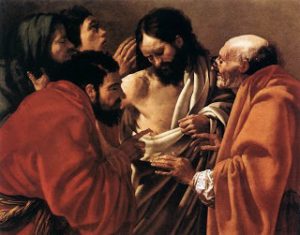
Arquivo para April 6th, 2018
See and believe: feeling the real
Contrary to common sense thinking, the virtual does not oppose the real, but it points to a path, digital technologies already under development as augmented reality, virtual reality and holograms are virtual not in the sense of unreality, but of potentialities. What may come out of them still depends on some technological advances, but the development of these artifacts, such as to create 3D holograms tested at Brigham Young
the real, but it points to a path, digital technologies already under development as augmented reality, virtual reality and holograms are virtual not in the sense of unreality, but of potentialities. What may come out of them still depends on some technological advances, but the development of these artifacts, such as to create 3D holograms tested at Brigham Young
Researchers of Bringham Young University (see our post) published in the January issue of Nature, will still depend on technological advances to market in the near future, this is its virtuality. In an information society, reading plays a central role, not incidentally it is linked to the printed artifact, the so-called Gutenberg Galaxy, however one can imagine that oral culture has little to do with it, or only compose with it , but this is not a fact.
Oral culture, seeing is linked to listening, may seem curious or strange in this culture is essential to listen, and speaking means a certain authority, were thus with the oracles, prophets and masters in Afro cultures, one must have the gift to tell in them the myths occupy a prominent place, that is why we develop here: seeing they do not see, and hearing they do not listen. It might be the opposite, if we think of photography, TV and the Cinema, but the so-called “society of the spectacle”, which Guy Debord defined the spectacle as the set of social relations mediated by the images, but these are only modern artifacts; cave paintings would then be what?
The line of analysis that although it criticizes seems more coherent is that of Paul Virilio, that the modern society walks with “speed” for the new media, and the dance and the theater would be the real resistances to this speed, But Virilio surrenders to the claim that technological innovations transform, modify, alter geographical space at all scales (local, national and global), does not say this, however, it is necessary to humanize them, and this process will be increasingly is inherent in these media. An example of oral culture is in Thomas’s famous passage, which is interpreted in the culture of information as saying that it is seeing to believe, it is wrong, it is to feel to believe, reread the passage of John 20: 25-27.
“Then the other disciples told him,” We have seen the Lord. “But Thomas said to them,” If I do not see the nail-mark in your hands, if I do not put my finger on the nail-marks, your side, I will not believe “…. and Jesus said, Put your finger here and look at my hands.”
Jesus appeared and asked that he also touch other passages Jesus appears and only when he speaks, and breaks bread is “seen,” modern man must touch and feel.

